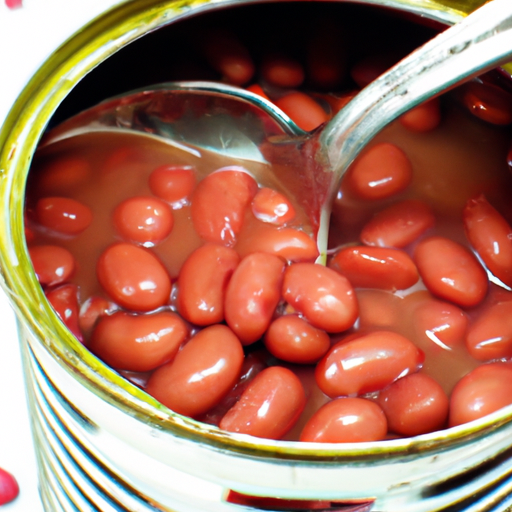The Versatile Canned Beans: A Pantry Staple
Canned beans are a true hero of the pantry. Whether you’re a cooking novice or an experienced chef, these little gems offer convenience, flavor, and endless possibilities. From their taste to their nutritional value and fascinating history, canned beans deserve a spot in every kitchen. Let’s dive into the world of canned beans and discover why they are a timeless treasure.
Taste and Texture
Canned beans boast a rich, earthy flavor that intensifies when cooked. The canning process infuses the beans with a gentle savory taste, making them both satisfying and versatile. The texture of canned beans is firm yet creamy, providing a delightful contrast in various dishes.
Common Uses in Cooking
Thanks to their adaptability, canned beans can star in countless culinary creations. Here are just a few popular ways to incorporate them into your cooking:
Soups and Stews: Beans give a hearty boost to soups and stews, providing both substance and flavor. Whether you’re making a classic chili or a comforting minestrone, canned beans add depth to these dishes.
Salads: From simple side salads to substantial main courses, canned beans are a perfect addition. Mix them with fresh vegetables, herbs, and your favorite dressing for a nutritious and satisfying meal.
Dips and Spreads: Transform canned beans into smooth and flavorful dips or spreads. Mash them with garlic, olive oil, and lemon juice for a quick and delicious bean puree, perfect for spreading on toast or using as a dip for veggies.
Tacos and Burritos: Create mouthwatering vegetarian or meat-based tacos and burritos with canned beans. They provide a protein-packed filling that pairs wonderfully with savory spices and fresh ingredients.
Nutritional Powerhouses
Besides their culinary perks, canned beans also offer an array of nutritional benefits. They are an excellent source of plant-based protein, fiber, and essential vitamins and minerals. Additionally, they contain no saturated fat, making them a heart-healthy alternative to meat-based proteins. Incorporating canned beans into your diet is a fantastic way to promote overall wellness.
History and Fun Facts
Beans have been a dietary staple for thousands of years and have played a significant role in many cultures worldwide. Here are a few intriguing historical tidbits and fun facts about canned beans:
The cultivation of beans can be traced back to ancient civilizations in the Americas, where they were treasured for their high nutritional content and long shelf life.
Canning technology revolutionized the availability and convenience of beans. The first commercial canning of beans began in the early 19th century, making it possible to enjoy them throughout the year.
Did you know that beans are famous for their ability to fix nitrogen in the soil? This means they help replenish essential nutrients, making them a valuable and sustainable crop.
Beans come in a remarkable variety of shapes, sizes, and colors. From kidney beans to chickpeas, each type offers a unique taste and texture, allowing for endless culinary creativity.
In conclusion, canned beans are a kitchen essential that adds depth, nutrition, and flavor to countless dishes. With their versatility and long shelf life, they are a reliable staple that can be transformed into delightful meals with minimal effort. And let’s not forget their historical significance and fascinating facts! So, stock up on canned beans and let your culinary imagination run wild. Your taste buds will thank you!
Note: While canned beans offer convenience, it’s important to rinse them before using to reduce sodium content and remove any metallic flavor associated with canning.
Facts about Canned Beans:
Origin: Beans have been cultivated and consumed by humans for thousands of years. They were one of the first cultivated crops, with evidence of their cultivation dating back to around 7000 - 8000 BCE in present-day Mexico and Peru.
Common Uses: Canned beans are a convenient and widely used ingredient in many cuisines around the world. They are popular in various dishes such as soups, stews, chilis, salads, and side dishes. They can also be mashed and used as a spread or filling in dishes like hummus and bean burritos.
Nutritional Benefits: Canned beans are a good source of plant-based protein, dietary fiber, and various essential minerals such as iron, magnesium, and potassium. They are also low in fat and cholesterol-free. Additionally, beans are rich in antioxidants and provide complex carbohydrates, which can contribute to long-lasting energy.
Unique Properties: Canned beans are often soaked and cooked prior to canning. This process helps to soften the beans, remove anti-nutrients, and enhance their digestibility. Canned beans are typically sold in a variety of types, including kidney beans, black beans, pinto beans, chickpeas, etc. Some canned beans are prepared with added seasonings or sauces for extra flavor.
Historical Significance: Beans have played a significant role in various cultures. In ancient Rome, they were considered an essential staple food. In the Americas, Native American tribes such as the Inca, Maya, and Aztec civilizations recognized the importance of beans in their diet and agriculture. Beans also played a crucial role in the Columbian Exchange, as their introduction to the Old World revolutionized diets and agricultural practices.




Use the share button below if you liked it.
It makes me smile, when I see it.